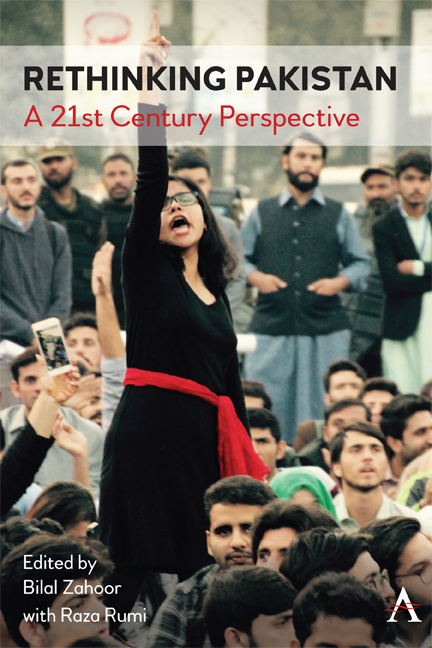Book contents
- Frontmatter
- Dedicated
- Contents
- Acknowledgements
- Introduction
- Part I Identity, Religion and Radicalisation
- Part II Development, Reform and Governance
- Part III Rights, Repression and Resistance
- Part IV Sex, Gender and Emancipation
- Part V Conflict, Diplomacy and Foreign Policy
- Contributors
- Bibliography
- Index
Chapter 9 - Pakistan: Charting a New Course to Development
Published online by Cambridge University Press: 20 January 2022
- Frontmatter
- Dedicated
- Contents
- Acknowledgements
- Introduction
- Part I Identity, Religion and Radicalisation
- Part II Development, Reform and Governance
- Part III Rights, Repression and Resistance
- Part IV Sex, Gender and Emancipation
- Part V Conflict, Diplomacy and Foreign Policy
- Contributors
- Bibliography
- Index
Summary
Introduction: An Alternative Approach to Development
Over the last seven decades of Pakistan's history, an economic structure has emerged that is characterised by three features. First, an inability to maintain high growth in national income per person over the long run. Second, endemic mass poverty accompanied by growing inequality between social groups and regions of the country. Third, persistent dependence on aid. These features manifest underdevelopment, which can be defined as a condition whereby the actualisation of the human potential of a society is systematically constrained. Pakistan's underdevelopment is fundamentally rooted in a socio-economic environment that restricts access over high quality education, constrains competition and where hiring is often not based on merit. This precludes equality of opportunity for individuals to develop their capabilities. Consequently, the human potential of society remains untapped.
In this essay, we will briefly examine the question of why Pakistan has been unable, so far, to achieve sustained high rates of national income growth. We will then explore the approach to development followed by policymakers in Pakistan to indicate that public policy has so far failed to address the fundamental constraints to growth sustainability and overcome underdevelopment. Finally, we will outline an approach that conceives of development as economic transformation. This is based on actualising Pakistan's human potential for creativity, innovation, sustained productivity increase and thereby sustained long-term economic growth.
The Failure to Sustain Economic Growth
An important feature that distinguishes developed from underdeveloped countries is that while the former are able to sustain per capita income growth over long periods of time, the latter fail to do so. This is not to say that underdeveloped countries are unable to grow; they do grow, but their economic growth takes place in spurts. Periods of relatively high growth are followed by close to zero or even negative per capita income growth, so that the gains made during the high growth periods are largely lost during periods of stagnation. Consequently, over the long run, the increase in per capita income is rather modest. It is certainly inadequate to transform the material conditions of life of most of the people. In this sense, Pakistan's pattern of stop-go growth is typical of underdeveloped countries.
- Type
- Chapter
- Information
- Rethinking PakistanA 21st Century Perspective, pp. 97 - 106Publisher: Anthem PressPrint publication year: 2020



